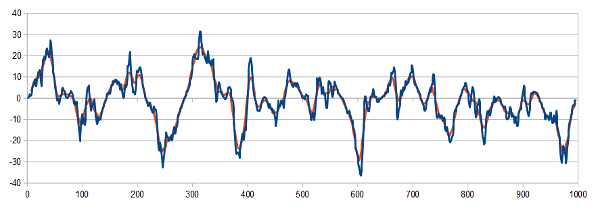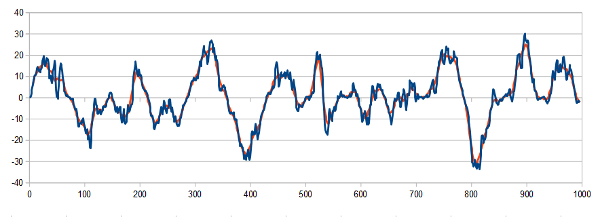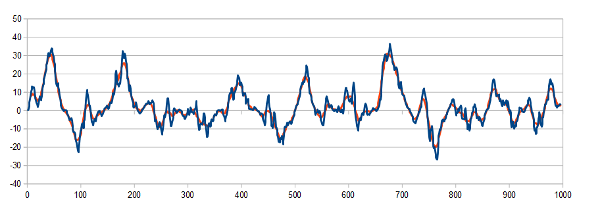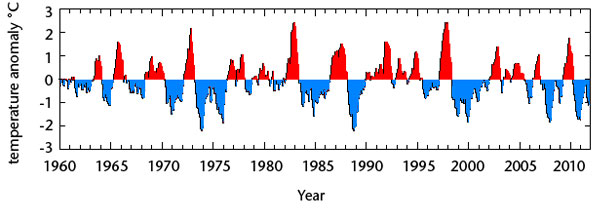I was on-line talking to yet another academic trying to explain to them that the whole temperature signal is natural variation (at least in the null hypothesis) and they kept insisting that the PDO, ENSO, AMO were “things” and not “noise”.
I was saying they were a resonance in the system responding to natural variation. Afterwards I realised that whilst I could work out what it looked like (with experience you can just do things like this in your head). But I hadn’t actually done some simulations to see whether what I was saying was sensible. (It’s just what I expected)
So here is ENSO (El Nino) and the PDO

And here is the response of a simple damped oscillator to 1/f noise which I cobbled together in half an hour (note red is ~20sample average):



 Yep – I’m reasonably happy the two look visually similar enough for me to say that PDO and ENSO are indistinguishable from the resonant response to 1/f type noise as seen in the global temperature.
Yep – I’m reasonably happy the two look visually similar enough for me to say that PDO and ENSO are indistinguishable from the resonant response to 1/f type noise as seen in the global temperature.



I’m new to this
but from my reading the warmists sound desperate for a strong ENSO
have I misread?
they also seem gleeful at any destructive weather event
finger waging ensues
strange
strong ENSO often produces havoc for some of the poorest folk, no?
their thinking seems quite odd to me as well
SS –
I’ve been following your 1/f arguments. I’m also familiar with modelling processes as bounded linear systems.
All real-world process parameters have natural limits. You might simulate this by inserting an amplitude-limiter between your (linear) noise-generator and filter elements.
I speculate that as the limiter will operate principally on the larger low-frequency noise, it may produce semi-regular oscillations of large amplitude and period – which makes me think of ice-ages. Is this a non-starter?
(Any such oscillations should have a period proportional to the limiter range)
Why not post your code?
Because it’s extra effort, it’s not that complex and no one has asked.
It’s just a spreadsheet.
Do I take it you are interested?
If so, it might be more sensible to give you actual code. What language do you use?